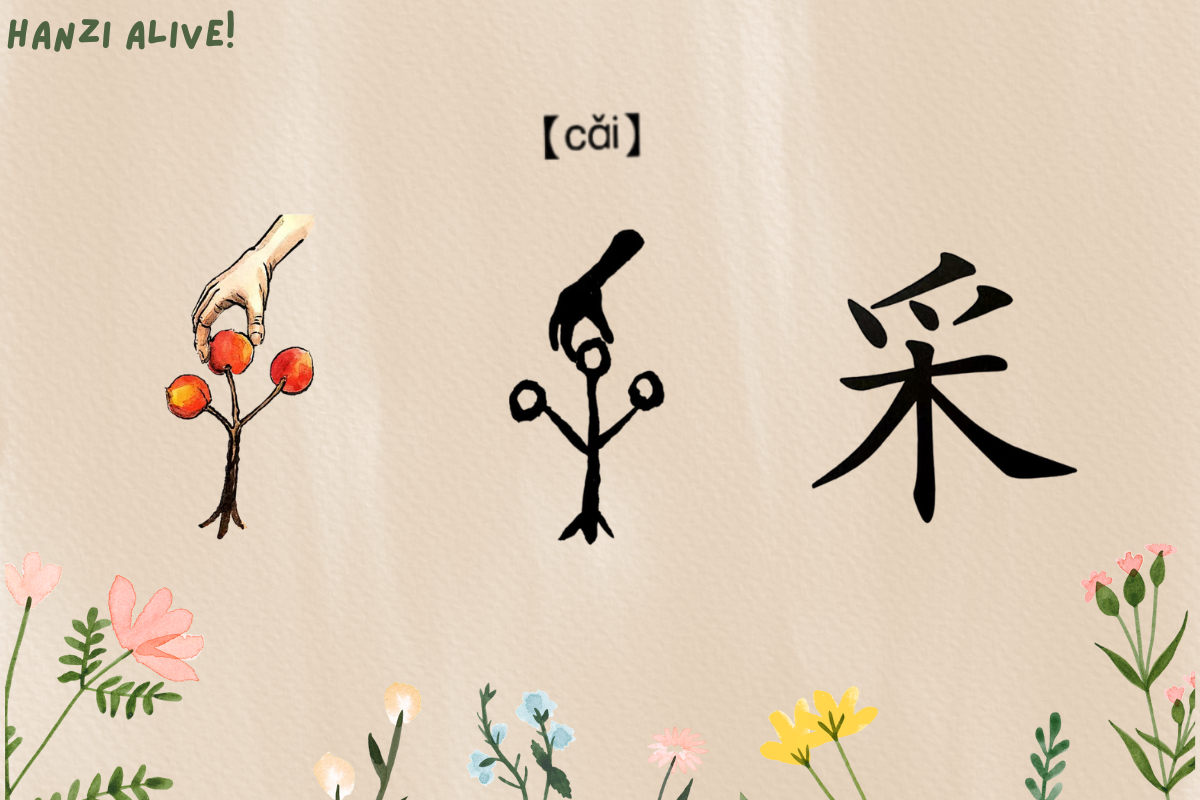Hanzi Alive!(9)
Chinese characters tell stories at the tip of a branch - '采' (cǎi) depicts the gesture of reaching out to pick fruits, while '朵' (duǒ) captures the beauty of petals hanging down from a flower bud. These two characters freeze moments of harvesting and blossoming.
采(cǎi)
Explanation:
- A tree bears three fruits, with a hand reaching out to pick them. The character "采" signifies "to pick". In its earlier form, "采" was simpler with only a hand picking.
Example:
- She picks flowers in the garden.
她在花园里采花。
tā zài huā yuán lǐ cǎi huā. - He likes collecting mushrooms in the forest.
他喜欢在森林里采蘑菇。
tā xǐ huān zài sēn lín lǐ cǎi mó gu.
Identify and circle "采" in the picture:

朵(duǒ)
Explanation:
- The image of a flower blossoming from a tree forms the pictograph "朵". It is commonly used as a measure word for flowers. For instance, "three flowers" would be expressed as "三朵花(sān duǒ huā)".
Example:
- This flower is very beautiful.
这朵花很漂亮。
zhè duǒ huā hěn piào liang. - There is a white cloud in the sky.
天上有一朵白云。
tiān shàng yǒu yì duǒ bái yún.
Identify and circle "朵" in the picture:

Now you understand: '采' portrays the interaction between humans and trees, while '朵' represents the poetic gift bestowed by nature. Like creeping vines, Chinese characters subtly weave the actions of life and scenery into their strokes.

